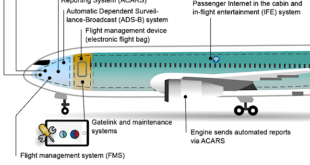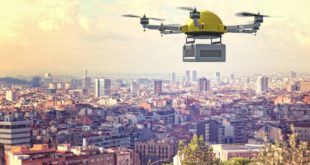On April 19, 2021, a small, rotor-powered aircraft made history. Attached to the belly of NASA’s Perseverance rover, the Ingenuity helicopter took to the skies above Mars, becoming the first machine to achieve powered, controlled flight on another planet. This groundbreaking feat opened up new possibilities for exploration and scientific discovery.
In 2020, NASA embarked on a groundbreaking mission to send a tiny, autonomous helicopter to Mars. This remarkable feat, achieved with the helicopter known as Ingenuity, represented a pivotal moment in space exploration. The nine-month journey to the Red Planet presented numerous challenges, from enduring temperatures plummeting below -90°C to navigating an atmosphere just 1% as dense as Earth’s. To prepare for this daunting task, NASA recreated the Martian atmosphere in a vacuum chamber on Earth, testing propellers spinning at speeds ten times greater than those used in Earth-based helicopters to ensure Ingenuity could maintain flight in the thin Martian air. On Mars, the conditions faced by the helicopter are equivalent to flying at 30,000 meters on Earth—an altitude where no helicopter has previously flown.
The Apollo Legacy and Future Prospects
The Apollo era was not only about achieving extraordinary feats but also about leveraging the space race to foster long-term technological progress and global collaboration. President John F. Kennedy’s vision for the space race was to achieve scientific discovery and harness the potential for technological advancement for the benefit of humanity.
NASA’s successful missions have driven the creation of technologies that continue to impact our lives. For example, GIPSY-OASIS software developed by NASA corrects GPS errors, influencing how emergency responders and tech giants like Facebook and Google determine our locations. The development of composite overwrapped pressure vessels reduced the Space Shuttle’s weight and found applications in military vessels and paintball guns. TEMPUR® Material, initially designed for astronaut comfort, is now a leading name in memory foam mattresses.
Engineering Feats and Historical Impact
Ingenuity’s mission marked the first time a vehicle of its kind had achieved flight on another planet. This achievement is not just a testament to NASA’s engineering prowess but also a significant milestone in the history of space exploration. The technologies developed for this mission have broader implications, extending far beyond the confines of Mars and impacting various industries on Earth.
NASA’s legacy of technological innovation is well-established. Over the past 50 years, NASA missions have led to the creation of thousands of commercial products, many of which have become integral to our daily lives. As Daniel Lockney, NASA Technology Transfer Program Executive, notes:
“We have developed life-saving devices that increase blood circulation during CPR, compression garments that prevent shock from trauma and blood loss, and implantable devices that keep people’s hearts pumping. These technologies have had a profound impact on the lives of those saved and their families. We’ve also improved safety with ablative materials that protect steel structures from fires, anti-vibration techniques that stabilize bridges and buildings, and technologies now standard in every airplane.”
From Tempur mattresses to GPS, digital image sensors in smartphones to cardiac pumps in hospitals, NASA’s technological breakthroughs have spun out entire industries. These innovations have transcended their initial applications, creating lasting impacts across various fields.
Overcoming Martian Challenges: The Ingenuity Helicopter
Mars presents an array of daunting challenges for any technological venture, particularly for flight. The planet’s thin atmosphere, extreme temperatures, and unpredictable dust storms create a hostile environment that tests the limits of engineering and innovation. NASA’s Ingenuity helicopter was meticulously designed to tackle these formidable obstacles.
1. Navigating a Thin Atmosphere
The Martian atmosphere is a mere 1% of Earth’s density, making flight particularly challenging. To achieve lift in such a thin environment, Ingenuity is equipped with a dual-rotor system that spins at incredibly high speeds. The rotors, designed to spin ten times faster than those on Earth-based helicopters, generate the necessary lift to keep the helicopter aloft. This high-speed rotation, coupled with the lightweight construction of the helicopter, ensures that it can maneuver through the sparse Martian air.
2. Withstanding Extreme Temperatures
Mars is known for its extreme temperatures, which can plunge below -90°C. To withstand these frigid conditions, Ingenuity’s design incorporates thermal protection systems that safeguard its delicate electronics and components. The helicopter is equipped with a robust thermal insulation layer and a heater to maintain operational temperatures, ensuring that its systems remain functional despite the harsh Martian cold.
3. Surviving Dust Storms
Martian dust storms can be both frequent and severe, posing a risk to the helicopter’s mechanical and optical systems. Ingenuity’s design includes dust-resistant components and an advanced filtration system to protect its sensitive instruments from abrasive particles. Additionally, its flight plan incorporates strategies to minimize exposure to dust storms, including careful planning of flight paths and landing sites.
4. Harnessing Solar Power
Ingenuity relies on solar panels to recharge its batteries, which power its flight and communication systems. The helicopter’s solar panels are strategically positioned to maximize exposure to sunlight, crucial for maintaining power levels during its flights. The efficient energy management system ensures that Ingenuity has enough power to operate its rotors, sensors, and communication systems throughout its mission.
5. Advanced Navigation Systems
To navigate Mars’ challenging terrain and maintain precise altitude and course, Ingenuity is equipped with a sophisticated navigation system. This system includes an array of sensors and cameras that provide real-time data on the helicopter’s position and surroundings. The data is processed by onboard computers to adjust the helicopter’s flight path and ensure stability and accuracy during its autonomous flights.
By overcoming these Martian challenges, Ingenuity not only showcases NASA’s engineering prowess but also paves the way for future aerial exploration on other planets. Its successful operation on Mars demonstrates the potential for aerial robotics in extraterrestrial environments and expands our understanding of how technology can adapt to the harsh conditions of space.
A Mission of Exploration
Ingenuity’s primary mission was to demonstrate that powered flight was possible on Mars. However, it quickly exceeded expectations. The helicopter completed a series of successful flights, exploring the Martian landscape and providing valuable data on the planet’s geology and atmosphere. It also served as a scout for the Perseverance rover, helping to identify potential landing sites and targets for scientific
Key Innovations
- Enhanced Autonomy: Ingenuity’s autonomous flight capabilities allowed it to navigate the Martian terrain independently, making decisions based on real-time data from its sensors.
- Improved Battery Technology: The helicopter’s solar panels and advanced battery technology enabled it to operate for extended periods, despite the harsh Martian environment.
- Advanced Navigation Systems: Ingenuity’s navigation systems, including its inertial measurement unit and optical navigation system, provided precise positioning and attitude control.
NASA’s technology transfer efforts are also evolving. The emergence of a commercial space industry has created new marketplaces for NASA’s technologies, facilitating broader applications and faster knowledge dissemination. For instance, research into diets for Mars missions has led to the discovery of omega-3 fatty acids now found in infant formulas. The Superelastic Tyre, developed for Mars rovers, exemplifies future innovations with its shape-memory alloys that resist damage and avoid punctures.
Conclusion
NASA’s autonomous helicopter mission to Mars represents a significant milestone in both space exploration and technological innovation. The advances achieved through this mission will not only enhance our understanding of Mars but also contribute to technological progress on Earth. As we continue to push the boundaries of space exploration, the lessons learned from these endeavors will contribute to the ongoing evolution of aerial robotics and their applications in extraterrestrial environments.
As history has shown, the pursuit of space exploration often yields transformative technologies that shape various industries. As research and development continue, we can expect to see even more impressive breakthroughs in autonomous Mars helicopters in the years to come. These advancements will play a crucial role in our exploration of the Red Planet and our understanding of the solar system.
 International Defense Security & Technology Your trusted Source for News, Research and Analysis
International Defense Security & Technology Your trusted Source for News, Research and Analysis

